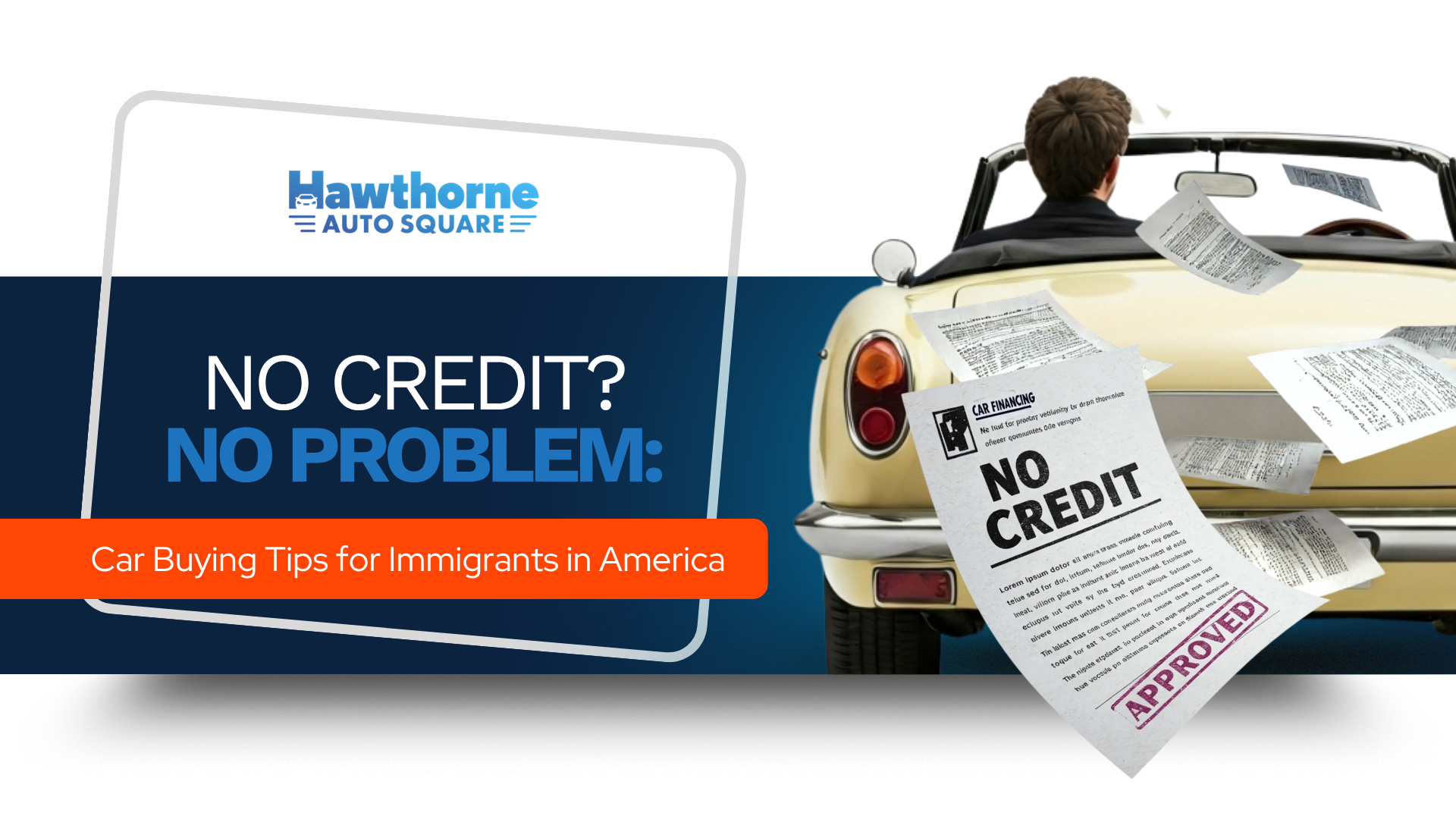
- SALES : (866) 707-7664
- PAYMENTS : (866) 902-7955
- 11646 PRAIRIE AVE, HAWTHORNE, CA 90250
- MON - SAT 8AM - 8PM | SUN 10AM - 6PM
- SALES : (866) 707-7664
- PAYMENTS : (866) 902-7955
- 11646 PRAIRIE AVE, HAWTHORNE, CA 90250
- MON - SAT 8AM - 8PM | SUN 10AM - 6PM
How to Jump a Car: Hawthorne Auto Square Guide

Jumping a car battery is a skill any driver can master. Getting stuck doesn’t mean you have to be stranded for hours. With the aid of another helpful driver, you can be back on the road in minutes. This guide on how to jump a car will help you get driving again and bring the vehicle to a nearby service station.
Park the Vehicle to Be Used as a Booster
The other driver’s vehicle should be parked close to yours, whether beside it or bumper-to-bumper. Make sure the jumper cables can reach between both batteries. Turn off the ignition, remove the keys, and engage the emergency brake in both vehicles. All accessories should be turned off as well.
Open the Hoods for Access
Pop open the hoods on both vehicles and locate their batteries. Some car batteries have plastic covers over the terminals. If so, remove these. Check that the jumper cables can reach and, if necessary, unwind or untangle them. Each cable has a pair of spring-loaded clamps.
Attach the Jumper Cables
A car battery has a positive and negative terminal. There’s usually a red cap on the positive terminal and a black cap on the negative one. Proceed as follows:
- Close the red clamp on the dead battery’s positive terminal.
- Attach the red clamp to the same terminal on the working battery.
- Attach the black clamp to the negative terminal on the working battery.
- Clamp the other side of the negative cable to an unpainted metal surface on your vehicle.
Now it’s time to start the car with the working battery. After it has begun running, turn the ignition to start your engine. If it doesn’t start right away, wait a few minutes for the battery to build a charge. The booster vehicle’s idle speed can be increased to speed up the process. Sometimes a car will jump start and die immediately after; if so, let the vehicle run for longer after the next jump to increase the charge.
If the car still doesn’t jump start, look for other issues. A clicking sound can mean there’s a problem with the starter. If the engine won’t run but the electrical system turns on, the starter, ignition switch, or battery may be defective, or a fuse may have blown.
Disconnect the Cables
First, disconnect the negative clamp from your vehicle. Then disconnect the negative clamp from the other car, followed by the positive clamp. Now remove the positive clamp from your jumped car. Place the cables back in your emergency kit, close the hood, and start driving. Continue for at least 20 minutes. During this time, the alternator will charge the battery. When you park, do so in an open area in case the car needs to be jump-started again.
If another jump is needed, the battery may be in poor condition and need to be replaced. Bring your car to a mechanical or auto parts store that runs battery diagnostic services.
How to Jump an Electric or Hybrid Car
The process is similar to how you’d jump a car with a gas-powered engine. On a hybrid with a 12-volt battery, check the vehicle’s manual. Where the jump-start tabs are located depends on the make and model. An electric vehicle (EV) also has a 12-volt battery to power its electronics. Jumping it can start the motor, but this can’t be done using a second EV. To jump-start the vehicle, you need a second, gas-powered vehicle or a portable jump-start device.
Shop at Hawthorne Auto Square for Used Cars
We have hundreds of leading-brand, low-mileage vehicles available at low prices at our buy here, pay here dealership. We can get you financed and offer a warranty that covers six months of service and maintenance. Browse our inventory online, visit us in person, or call 866-707-7664 for assistance.
Latest News


Why Should I Buy a Used Toyota Camry?

Bankruptcy and Car Ownership: How BHPH Can Help


Used Car Price Trends for 2025: What Buyers & Sellers Need To Know
Get approved
It only takes a few minutes and won’t affect your credit.
- Pre-Inspected Cars
- Clean Title
- Under Warranty
Latest Videos
What Do I Need To Buy A Car - Hawthorne Auto Square
Second Chance for a New Car - Hawthorne Auto Square
Pre Approved Auto Lone – Hawthorne Auto Square
- SALES : (866) 707-7664
- PAYMENTS : (866) 902-7955
- 11646 PRAIRIE AVE, HAWTHORNE, CA 90250
- MON - SAT 8AM - 8PM | SUN 10AM - 6PM
© 2025 Hawthorne Auto Square. All Rights Reserved. Website Designed by: Ad Leverage | Privacy Policy | Terms of Service | Manage Cookies | DSAR |License #91864
© 2025 Hawthorne Auto Square. All Rights Reserved. Website Designed by:
Ad Leverage | Privacy Policy | Terms of Service
License #91864

